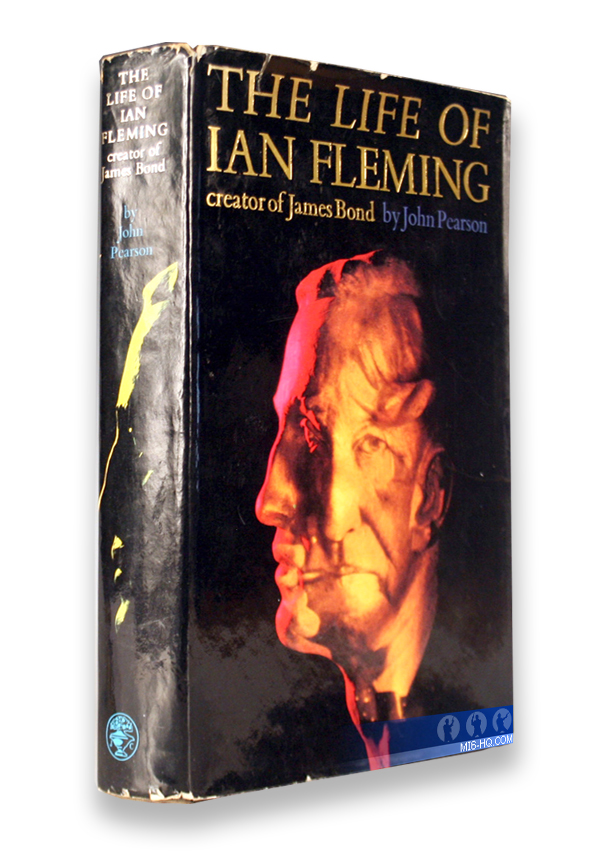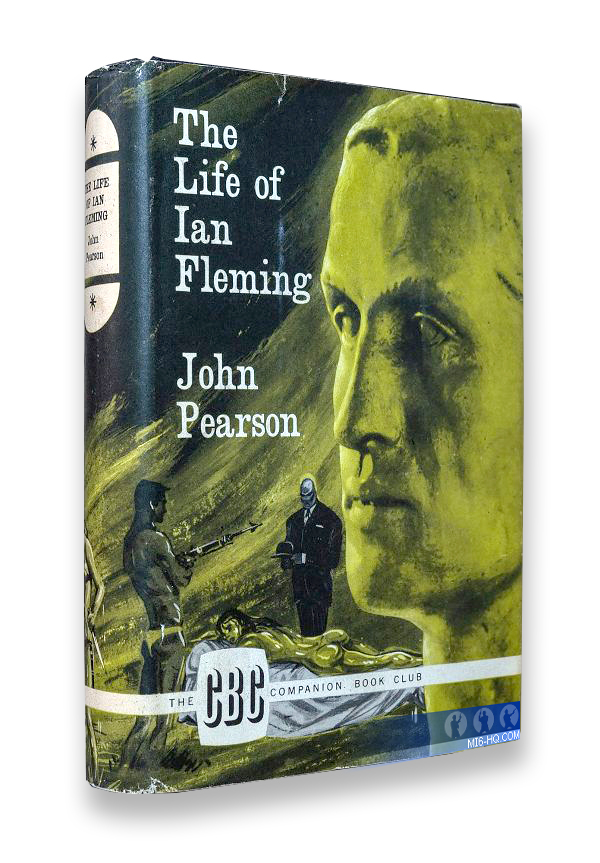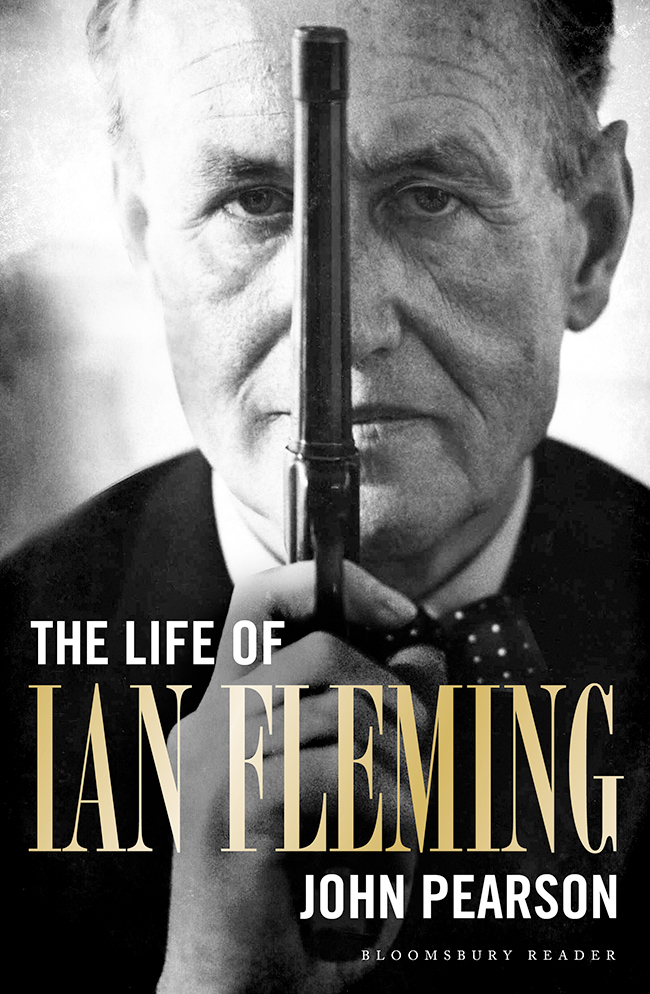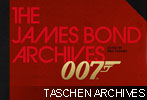Bond Bibles - John Pearson
10th July 2021
Meet John Pearson, acclaimed author of 'The Life of Ian Fleming'
Ever since Ian Fleming wrote Casino Royale many authors and journalists have explored and celebrated the James Bond phenomenon. While some books have been official, large format publications, others have delved deeper into specific areas of the subject. In this new series Matthew Field will meet both high-profile writers as well as some of the world’s most knowledgeable “007” experts, who have contributed to the James Bond bibliography.
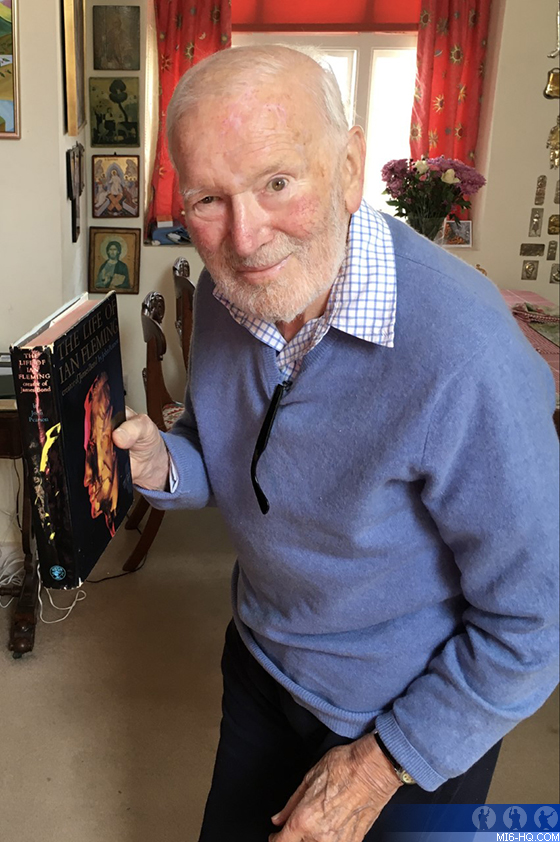
John Pearson – 05 October 1930
Bond Bibles:
- The Life of Ian Fleming (Jonathan Cape, 1966)
- James Bond: The Authorised Biography (Sidgwick & Jackson, 1973)
- Ian Fleming: The Notes (Queen Anne Press, 2020)
JOHN PEARSON PHOTOGRAPHED BY MARK PEARSON. All rights reserved.
John Pearson is the acclaimed author of many biographies but to James Bond scholars, his landmark book, The Life of Ian Fleming, remains his most prolific. He also penned the continuation novel, James Bond: The Authorised Biography, published by Sidgwick & Jackson in 1973. Born in Epsom in 1930, Pearson graduated from Peterhouse Cambridge with a double first in History. He worked on the Economist Intelligence Unit and as a BBC trainee producer before being offered a job by Ian Fleming as his assistant on the ‘Atticus’ column for the Sunday Times. Pearson’s biographies include subjects such as Winston Churchill, Donald Campbell, the Getty family, the Sitwells, Lord Lucan as well as the notorious Kray twins.
Published in the wake of Fleming’s death and while ‘Thunderball’ was breaking box office records around the world, 'The Life of Ian Fleming' was the first Bond bible. Pearson was commissioned to write the book just weeks after Fleming died and captured first-hand accounts from those closest to the author. He spoke with former girlfriends, military colleagues, friends, fellow writers, Fleming’s doctor and tailor and most importantly, his widow Ann and brother Peter. Pearson knew his subject well and his efforts produced a brilliantly entertaining and engaging read.
Shortly after celebrating his 90th birthday, Pearson reflected on writing and compiling this landmark tome, which, nearly 60 years later, is still in print.
How did you become involved with Ian Fleming and his world?
Well that’s interesting. Fleming was looking for someone to join him at the Sunday Times to assist him with Atticus - a pseudonymous weekly column. Graham Greene shared a mistress with my tutor at Cambridge, Brian Wormald, whose name incidentally, Greene used for his antihero in 'Our Man In Havana'. In 1959, Brian introduced me to Graham, who in turn, introduced me to Ian Fleming, suggesting, “This is the man for you.” This was a huge break. I was given great latitude by Ian and met many people who were useful to me in subsequent projects. For one of Ian’s more unusual story ideas for the column, he sent me off in search of the most ridiculous and expensive Christmas presents in London. After looking at my findings he chose a very expensive gold plated egg decapitator, which sliced the top of a boiled egg perfectly. Because the column was credited only to Atticus, Ian was able to reveal his personality without fear of ridicule. In fact my time working with Ian Fleming was my springboard to writing books.
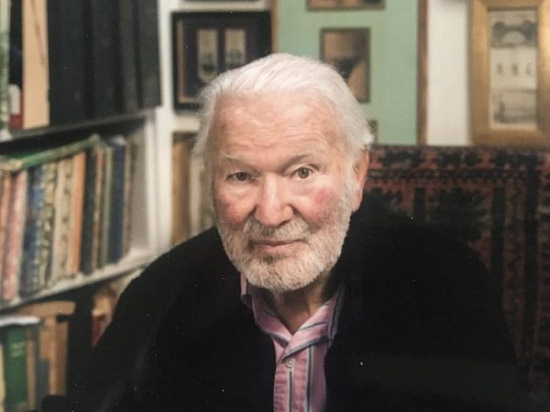
John Pearson; image © the John Pearson Collection.
Yes, Fleming had a hand in you ghost writing the book, Airline Detective, the exploits of B.O.A.C. security chief, Mr. Donald "Flying" Fish and his roving aide, Douglas Buchanan…
Well Ian was too lazy to write it himself! (Laughs). He did write an introduction for the book though. I still have a letter Ian wrote to me after it was published which said, “I really do honestly think it is the most competently ghosted bit of writing I have ever read.”
What were your thoughts on Fleming’s James Bond novels?
My initial reaction is very different to my subsequent thoughts. The first book I read of course was 'Casino Royale'. I thought it was ok, a bit technical, a bit centred on gambling. But the subsequent books I really enjoyed, especially the premise around 'Goldfinger', which I thought, was very clever.

The Life of Ian Fleming uncorrected proof; image credit: Michael L. VanBlaricum.
You began work on The Life of Ian Fleming three months after his death in August 1964. What was the inspiration for the book and how did the project begin?
Quite simply I had worked with Fleming so I was ideally placed to write it. I began the book at the request of Leonard Russell, the features editor at the Sunday Times. Leonard’s part was to make sure that the book got serialised in the Sunday Times, which it was and to great plaudits. He also introduced me to Jonathan Cape who published the book. Throughout 1965, Leonard encouraged me to collate as much information and research as possible. Originally we were going to share a credit, but I ultimately did the lion’s share of the work and he agreed to let me have full credit. We both ended up making quite a lot of money from the book. We had a phrase for this money: “fairy gold.” I ended up dedicating the book to Leonard.
You interviewed over 150 people. Tell me about your journey researching and writing, The Life of Ian Fleming?
It wasn’t really a journey. I was a journalist. It was quite quick. I took a year to complete the interviews. I went all over the world, I interviewed Nazim Kalkavan in Istanbul, Sir William Stephenson in Bermuda and Richard Hughes in the Far East. It was the day job as far as I was concerned.
I am interested in your research process. For our Bond book, Some Kind of Hero, Ajay Chowdhury and I were able to record interviews digitally and then have multiple audio files open on screen when writing. It was a very different world in the mid 1960s.
I relied heavily on my own memory. I wrote down my impressions immediately after leaving each interview. I used abbreviations, which still make sense to me. My notes were all handwritten initially. In fact, looking back at those notes, they are quite detailed. I sometimes used tapes. For example, I recorded an interview with Noël Coward but it was largely conducted in that way to respond to Noël’s flamboyant nature. I tried to do a similar interview with the novelist, Somerset Maugham, whose work Fleming hugely admired. I went down to Antibes to interview him but he was having a nervous breakdown and all I could hear was a series of appalling, wailing noises coming from the house and I was not allowed in to see him. I cannot find any of the tapes.
You interviewed Ann Fleming when she was still coming to terms with Ian’s death. How involved was she in the project?
Annie Fleming gave me a great deal of time. She talked candidly about their marriage. She said that all Ian’s affairs were lightning affairs. He was a great man for leaving people. Annie said she wanted him home but he wanted to be away, to travel. Ian was at his best in hotels. He had a greater capacity than anyone for turning a hotel room into a home. His bottle of Bourbon, his typewriter, his indigestion tablets. Annie also described Ian as entirely egocentric. His aim for as long as she knew him was to avoid the dull, the humdrum and the everyday demands of life that afflict normal people. He stood for working out a way of life, that was not boring and he went where this led him. It ended with Bond.
Did Ann pass any comment on the James Bond novels to you?
She said the books were his dreams. Pure Walter Mitty.
Where did you interview her?
I interviewed Annie over four sessions at both the house in Victoria Square and out at Sevenhampton near Swindon. Sevenhampton was a large Jacobean country house which Ian and Annie had purchased in 1963, the year before Ian died. I felt the place had a desperate sadness about it. It was out of its time, an eighteenth century Whig magnate’s palace built from film money, a Rex Whistler fantasy bought by Bond. Annie told me, the house was chosen by Ian but I don’t think it was a place that terribly interested him. I think he went along with it for the sake of marital peace. I remember there was still evidence of Ian in the house. His Wellington boots were still in the gun room and beside them, face turned to the wall, the Amherst Villiers portrait which adorned the deluxe edition of Cape’s ‘On Her Majesty’s Secret Service.’ Annie told me how she hated that picture as it made him look so miserable. I also noticed the Richard Chopping paintings for the dust jackets had been framed and placed along the landing.

You also met and interviewed Ian’s older brother, Peter Fleming...
I enjoyed meeting Peter who struck me as the quintessential country squire. We talked at Merrimoles House, which was on the Nettlebed estate in Oxfordshire. The house had belonged to their grandfather, the banker, Robert Fleming. I remember we talked in a billiard room surrounded by dogs, pipes and billiard cues. Of course Ian deeply admired Peter and that spurred him on as a writer too. Peter spoke rather oddly about the Bond success. He seemed to treat the success quite separately from the books, which frankly, he didn’t care that much for. But the success he was clearly in awe of.
Did you meet Ian’s son, Caspar?
He was only 13 when I was researching the book so I did not interview him. Others made comments about Caspar. Ian’s secretary, Beryl Griffie-Williams, who also worked for Annie, noted that Caspar was allowed to fire a starting pistol in the house, while Lisl Popper, one of Ian’s former lovers, whom he had met while studying in Kitzbühel, Austria, told me with great relish, “I hear that he is now giving the mother hell!”
Was there anyone you found particularly difficult?
Well Ian’s secretary, the aforementioned Beryl Griffie-Williams was an old dragon, who clearly considered the shade of Ian’s history to be her own personal property. She said, “I’d better tell you from the very start that I don’t approve of this book being written. It’s much too soon, and I am not sure there is really much to write about.” However, she was sitting in front of three banks of grey filing cabinets containing Ian’s papers and I was given permission to go through these by Annie. Interestingly, Beryl had already been working through them, censoring them and chucking stuff out which she said, “included a great deal of private correspondence which would cause individuals nothing but pain if it came to light.”
Did you visit Goldeneye in Jamaica?
Yes. I even swam in the bay which Ian did every morning. It was when I was snorkelling over this incredible underwater garden that I truly appreciated the real beauty of Goldeneye. This was Ian’s private dream, the sort of world where Captain Nemo ended up in the Jules Verne books he read as a child. Annie felt Goldeneye was not the sort of place that is endurable if you have nothing to do. She said she had begun painting to pass the time and Ian had started writing. Annie was very cross that Fleming said he wrote Casino Royale as a way of dealing with his impending marriage.
What was your favourite interview and why?
I don’t think like that. The project was the key and I saw the interviews as pieces in a huge jigsaw.
You mentioned Graham Greene introduced you to Fleming. Did you interview him for the book?
Yes. He told me how he did not really like Ian’s books, the sadism offended him. He recalled going to stay in Goldeneye but left under a cloud after offending Ian’s housekeeper, Violet Cummings. Graham said Violet was swindling Ian on everything, for example, charging £10 a week for vegetables. I also met Violet and interviewed her when I visited Goldeneye. She was very much devoted to the pious memory of Ian who she called, “the Commander.”

Fleming had only been dead two years when the biography was published. Was there information and material you left out because it felt too raw or sensitive?
Last year, Queen Anne Press published 'Ian Fleming: The Notes' a collection of my original research documents. It details what was available to me before I started crafting the biography. What you read in 'The Notes' is a lot of material I chose not to use in 1966, particularly with regard to his marriage. It was important not to publish this material until a certain juncture. There has to be what I call acqua passata – water has to be allowed to pass under the bridge. At the time some of my findings would have caused some embarrassment. There is always the danger that you give oxygen to things that are just wrong, which would be quite easy with Ian, because he was such a fantasist. The path I took with the book you can deduce for yourself by comparing 'The Life of Ian Fleming' to 'Ian Fleming: The Notes'. I made a statement in the biography that Ian’s heart troubles were accelerated by the aggro he was having over the ‘Thunderball’ rights. That comment ended up with a retraction from Jonathan Cape because they did not want any litigation. If you look in the first edition, an erratum slip was inserted to distance them from my comments. I stand by what I said and wrote.
Jan Pienkowski designed the dust jacket for the Jonathan Cape first edition. Tell me about your memories of creating this remarkable cover, which featured a gold painted bust of Ian Fleming, believed to be, based on an original sculpture by the mother of his “unofficial” ex-fiancée, Monique Panchaud de Bottomes…
There’s quite a funny story there. Replicas of the bust photographed for the dust jacket were circulated around the shop fronts of WH Smiths to promote the book. My father went into the branch in Sutton and said, “My son wrote that book I would really like to have the bust when you have finished with it.” And the old boy did get it. Of course, like so many of these things, it vanished over the years. I wrote an authorised biography about the London based gangsters, the Kray twins. Ron gave me one of his paintings of a black sun. But that too has been lost in the mists of time.
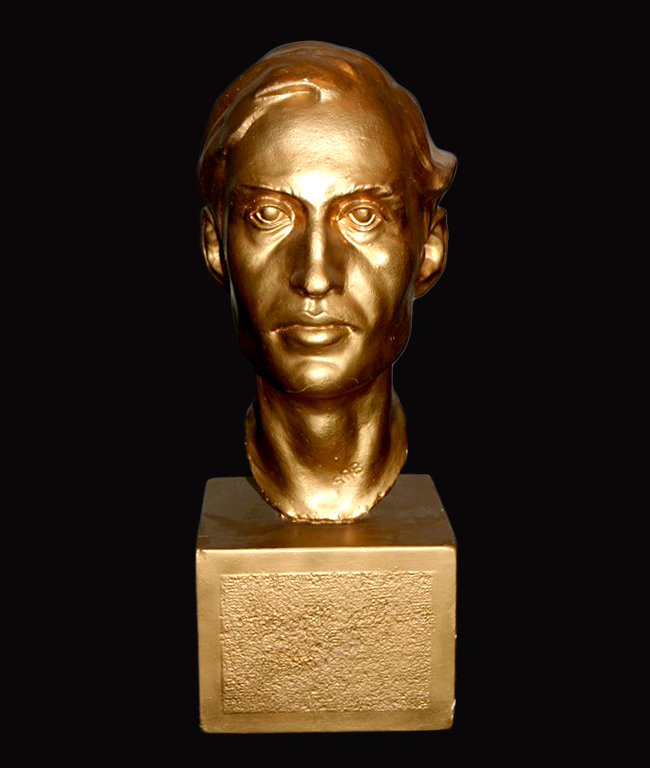
A Gold Bust of the James Bond creator featured on the cover of 'The Life of Ian Fleming'. Image credit: Michael L. VanBlaricum.
Interestingly, a couple of those promotional busts have come up for auction over the years. The Life of Ian Fleming was first published in 1966 at the height of Bondmania. What are your memories of the press interest in your book and how did its success change your career?
That it was serialised over many weeks in the Sunday Times was a big deal. The book attracted attention on both sides of the Atlantic and the press were interested and – by and large – positive.
In 1967, Ann Fleming expressed in a letter to Nicholas Henderson (diplomat, writer and future British Ambassador to the United States) that your book “revolted her” and she wished she had not participated.
The “revolting” comment came from Evelyn Waugh who felt that any revelation about Ian and his married life was by definition, scurrilous. He said this to Annie and this became her refrain. It did the book no harm at all. She also accused me in that letter of being a” ferret” although I guess that is what a biographer has to be.
Your book has been a key source for a number of film and TV dramatizations examining Ian Fleming – most notably Anglia Television’s Goldeneye (1989) starring Charles Dance as Ian Fleming and more recently, Sky Atlantic’s series, Fleming (2014) in which Dominic Cooper played him. What are your memories of these projects?
One of the first I was involved in was a documentary for the BBC, in 1970, an analysis of Ian, made under their Omnibus banner, for which I was their research advisor. I remember the Charles Dance film, I was heavily involved in that and I really wanted it be of high quality because it was the first time any of my works had been adapted for film. It made me a lot of money. I liked the Dominic Cooper series and there are photographs of us together on set.

In 1973, you penned the rather excellent novel, James Bond: The Authorised Biography…
The way I approached that book was straightforward. My opinion is not terribly original, which is that James Bond was the alter ego of Ian. And having written a book about Ian I was superbly placed to write about James Bond. There were lots of biographical details about Bond that Fleming had left out that I was able to fill in. Some of this is now part of the perceived canon. I’ve often been asked why I chose 11 November 1920 as James Bond’s birthday. I wrote that book when I was 42, and I felt at the time, James Bond had to be 10 years older than me, coupled with the fact that Armistice Day was and is an important date.
I am not sure if you are aware John but your birthday, 5 October, falls on ‘Global James Bond Day’, the date ‘Dr. No’ premiered in London in 1962…
I had no idea! (Laughs). It must have been my idea!
You also gave James Bond his London address: 30 Wellington Sq…
There is no magic here. He needed a London address and this seemed custom-made.
You captured Fleming’s voice and style so well. Tell me about following in his footsteps and crafting this backstory for the literary Bond character?
Rather like Ian, I wrote this book swiftly. I knew Ian’s backstory inside out and it was a quick step to flesh out Bond. I had a bit of fun exposing him to KCS Wimbledon, my own school.
It is my personal favourite of all the continuation novels. Did Glidrose ever ask you to write a second Bond novel?
I was asked but I was absolutely not going to do another James Bond novel. I had got that out of my system.
In 1995, Andrew Lycett also wrote a biography of Ian Fleming. Nearly 30 years had now passed since the publication of your book. Did Lycett talk to you for his project and what did you think of his work?
I have nothing much to say about the Lycett biography. Nicholas Shakespeare is currently writing a new biography commissioned by Ian Fleming Publications. I like Nick and in fact, worked briefly with his father on The Times Literary Supplement. I think he is going to take his time on the project and I will wait and see what Nick comes up with. He is a skilled writer and I think Ian would have liked him.
Can you tell me more about your decision to publish Ian Fleming: The Notes? How did it feel to be opening up your original research files after so long?
There was a hint of nostalgia looking at the notes and I believe that the exercise was worthwhile. This is all about explaining how a biography evolves. I used the jigsaw metaphor earlier. All the pieces of a jigsaw have to be interlocking. I really believe that there is a powerful lesson to be drawn from the material I used and the material I did not. I have similar notes from my work on Winston Churchill, Donald Campbell, the gamblers of the Clermont Club and the Gettys. The same logic applies.
The Life of Ian Fleming was a bestseller. How did it change your life?
I have already said that the book did well and to be straight forward the book changed my life and the lives of my family. I moved my family from Kew to Rome when “la dolce vita” was in full swing. It was exciting and we all loved it.
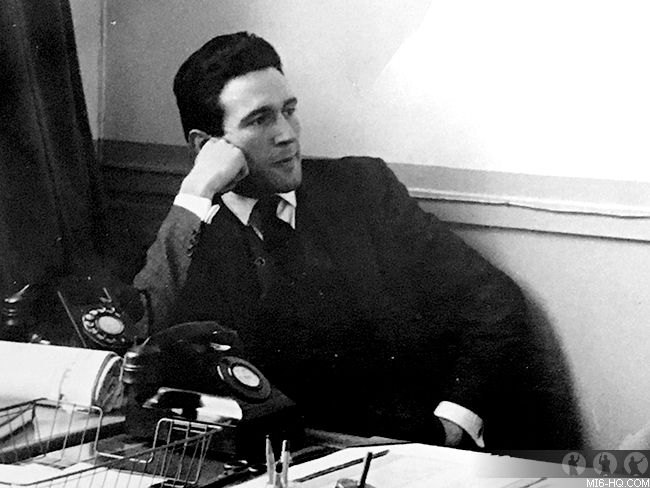
Young John Pearson; image © the John Pearson Collection.
The Life of Ian Fleming was the first significant Bond bible. How does it feel to still be talking about the book, 55 years after you first wrote it?
I am very proud of the book. I feel that it has stood the test of time. It launched me as a biographer but allowed me to remain a journalist. During those 55 years I have been my own boss throughout. My books and my family are my legacy. In fact my son Mark and granddaughter Lydia are very much involved and look after my back catalogue and even my presence on social media!
Thanks to Mark Pearson, Lydia Pearson, Michael VanBlaricum and Brian James Smith
Stay tuned to MI6-HQ.com for future exclusive interviews in Matthew's 'Bond Bibles' series.
Get Bond in Your Inbox
Sign up for occasional email updates from MI6. Get notified of breaking Bond news, and digests of recently releases features:









